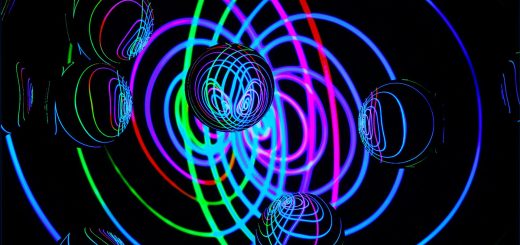Can Parrots Really Talk? The Truth About Mimicry

Before diving in, please note: This post is for informational purposes only. If you’d like to know more about how we approach topics, feel free to check out our friendly Disclaimer Page.
Hey there, amazing readers! 🖐️ Just a quick note: yes, we know there are a lot of ads here. Trust us, we get it—it’s not the prettiest look, but they help us keep this blog alive and kicking. Those pesky little ads cover the costs of all the behind-the-scenes magic, from hosting and tech stuff to creating content we hope you’ll love.
We’re committed to delivering quality posts, and your support (even just sticking around despite the ads) means everything to us. So, bear with us, and thanks for helping us keep the good vibes rolling. Now, on to the fun stuff! 😉
TRANSLATE BUTTON AT THE END OF THE ARTICLE
A Quick Overview
Can parrots really talk?
This age-old question stirs excitement among bird lovers and casual observers alike.
When we think of parrots, we often envision vibrant colors, playful antics, and, of course, their remarkable ability to mimic human language.
But what lies behind this mimicry?
Do they truly understand the words they say, or are they simply repeating sounds they’ve heard?
In this article, we’ll dive deep into the captivating world of parrot mimicry, exploring the science, the various species, and even common myths associated with these feathered companions.
Introduction: The Fascinating World of Parrot Mimicry
Parrots have long enchanted us with their colorful feathers and charming personalities.
Their talent for mimicry is one of the most intriguing features, making them popular pets and stars in various media.
Imagine coming home after a long day and being greeted with a cheerful "Hello!" from your parrot.
It’s enough to put a smile on anyone’s face.
But what exactly is mimicry?
It’s not just about repetition.
These birds can imitate sounds they hear in their surroundings, from human speech to household noises like doorbells, phones ringing, or even the sound of a microwave.
This ability isn’t just a party trick; it serves as a critical social function in their natural habitats, helping them communicate within their flocks and bond with one another.
When you look into the eyes of a parrot, you might see a flicker of intelligence.
Many parrot owners have witnessed their birds associating phrases with specific actions or events.
While it can be easy to get lost in the wonder of their mimicry, understanding the science behind it heightens our appreciation for these remarkable creatures.
How Parrots Mimic Sounds: The Science Behind It
The ability of parrots to mimic sounds stems from their unique vocal anatomy.
At the core of their talent is a structure called the syrinx, located at the base of their trachea.
This vocal organ allows them to produce a wide array of sounds, far beyond what other birds can manage.
Syrinx Anatomy: Parrots can control their syrinx with incredible precision, adjusting air pressure and muscle tension to create diverse sounds.
Auditory Learning: Parrots are excellent listeners.
They can hear and remember sounds, picking up new phrases or noises as they’re exposed to them repeatedly.
Social Interaction: In the wild, parrots mimic each other to strengthen bonds or signal their presence.
This social nature encourages their vocal mimicry, making it a fundamental part of their communication.
Imitating Vocal Patterns: Parrots often mimic the rhythm and pitch of human speech, allowing them to fit into the social fabric of their surroundings.
Their mimicry is not random; it’s often context-driven.
Discover "Dog Care: Learning How to Care for Your Furry Friend 🐾"
Learning Environment: The environment plays a significant role.
Parrots raised in a stimulating setting with ample interaction are more likely to develop extensive vocabularies.
In essence, a parrot’s ability to mimic sounds beautifully reflects its intelligence and adaptability.
They absorb sounds from their environment, shaping their skills with practice and social interactions.
Can Parrots Actually Understand Human Speech?
This is where things get intriguing.
While parrots can mimic human speech astonishingly well, the question remains: do they truly understand what they’re saying?
Contextual Understanding: Many parrot owners report that their birds seem to recognize specific phrases in context.
For example, if you say "time for dinner," a trained parrot might respond with excitement.
This hints at some level of comprehension.
Associative Learning: Parrots often learn to associate words with actions or events.
If you reward your parrot with a treat every time it says "hello," it quickly understands that saying the word can lead to positive outcomes.
Limitations: However, understanding human language is not the same as mastering it.
Parrots may know how to say "I love you" but might not grasp the meaning behind it as we do.
Emotional Connection: Parrots form close bonds with their human companions.
This emotional connection can enhance their responsiveness to speech, making it seem as though they understand.
Cognitive Abilities: Studies show that some parrot species exhibit problem-solving skills and reasoning abilities.
This cognitive capacity suggests they might comprehend more than we typically assume.
In short, while parrots have a remarkable knack for mimicking words and phrases, their understanding is generally more about context and association than true comprehension.
The Different Species Known for Their Talking Ability
Not all parrots are created equal—some species are renowned for their vocal talents.
Here are a few that stand out:
African Grey Parrot: Renowned for their intelligence and extensive vocabularies, African Greys can learn to speak hundreds of words and phrases.
They are often regarded as the most articulate of all parrot species.
Amazon Parrots: These sociable birds are also excellent talkers.
They can mimic speech and often have lively personalities, making them delightful companions.
Eclectus Parrots: Known for their striking sexual dimorphism, male and female Eclectus parrots both have impressive vocal abilities.
They’re often described as having clear, melodious voices.
Budgerigars (Budgies): While small, budgies are surprisingly good at talking.
They can learn a variety of words and phrases and are often the first choice for novice bird owners interested in teaching their pets to talk.
Cockatoos: These affectionate birds enjoy interacting with their owners and can learn both words and phrases, often accompanied by playful antics.
Each of these species has distinct vocal characteristics, making them unique in their own right.
Choosing a parrot for its talking ability often depends on the owner’s preferences and lifestyle.
Common Myths About Parrots and Their Talking Skills
Parrot mimicry is surrounded by myths and misconceptions.
Let’s debunk some of the common myths:
All Parrots Can Talk: Not every parrot species is a natural talker.
While some are highly vocal, others may prefer to communicate in different ways.
Parrots Understand Everything They Say: As we discussed, parrots often mimic without true comprehension.
They associate sounds with outcomes but lack deep understanding.
Talking Parrots Are Not Intelligent: Mimicry doesn’t equate to a lack of intelligence.
In fact, many talking parrots show advanced cognitive abilities and problem-solving skills.
You Need to Train Them Daily: While regular interaction can help, many parrots will naturally mimic sounds over time if they’re stimulated by their environment.
They Only Mimic Human Speech: Parrots are also capable of imitating other sounds, from animal calls to everyday household noises, showcasing their diverse vocal skills.
These myths can lead to misunderstandings about what it means to share your life with a talking parrot.
Recognizing the truth behind their abilities helps foster a deeper bond with these remarkable birds.
The Role of Socialization in a Parrot’s Speech
Parrots are inherently social creatures; their environment heavily influences their ability to mimic speech.
Here’s how socialization plays a vital role in their vocal development:
Early Exposure: Parrots raised in social environments with regular human interaction tend to develop better vocal skills.
The more they hear, the more they can mimic.
Bonding Through Communication: Parrots often mimic their owners not just for fun but as a way to strengthen bonds.
When they hear a phrase consistently in a loving context, they’ll eagerly attempt to reproduce it.
Peer Interaction: In the wild, parrot flocks communicate constantly.
This social interaction encourages mimicry and the development of vocal skills.
Daily Routines: Incorporating speech and sounds into daily routines can enhance a parrot’s vocabulary.
Bonding moments, such as during playtime or feeding, are excellent opportunities for verbal engagement.
Reaction to Tone: Parrots are sensitive to tone and emotion.
Positive reinforcement, like praise and treats, can encourage them to repeat words more often.
Socialization isn’t just a fun way for a parrot to learn; it’s a crucial component of their overall well-being.
Training Tips: How to Teach Your Parrot to Talk
Teaching a parrot to talk can be a rewarding experience.
Here are some tips to help you along the way:
Choose the Right Words: Start with simple, frequently used words or phrases. "Hello," "goodbye," and your name are great starters.
Repeat Consistently: Consistency is key.
Repeat the chosen words regularly in the same context, so your parrot associates them with specific actions.
Use Positive Reinforcement: Whenever your parrot attempts to mimic sounds or words, reward it with treats, praise, or affection.
This encourages them to repeat the behavior.
Engage in Conversation: Talk to your parrot as you would a friend.
Use varied tones and inflections to make the interaction lively.
Limit Distractions: Create a calm environment for training sessions.
Too much noise or movement can hinder your parrot’s ability to focus.
Be Patient: Every parrot learns at its own pace.
Don’t get discouraged if progress seems slow.
Practice Regularly: Short, frequent training sessions are often more effective than long ones.
Aim for five to ten minutes a day.
Encourage Playfulness: Incorporate play into your training.
Parrots love games, and making the process fun can enhance their learning.
Incorporate Music: Some parrots respond well to music and may even pick up phrases from songs.
Be Your Parrot’s Friend: Build a trusting relationship.
When a parrot feels safe and loved, it’s more likely to engage in vocalization.
Training can be a delightful journey, filled with laughter and bonding moments.
Enjoy the process, and celebrate small milestones along the way.
Parrot Sounds: Beyond Words and Phrases
When we think about talking parrots, we often focus on words.
However, their vocal repertoire extends far beyond mere phrases:
Whistles: Many parrots can whistle tunes and mimic melodies, showcasing their musical talents.
Clicks and Clucks: Parrots often use clicks or clucks to communicate with each other or express excitement.
Mimicking Other Animals: Some parrots can imitate the sounds of dogs barking, cats meowing, or even the squawking of other birds.
Environmental Sounds: A well-socialized parrot might mimic household sounds, like the ringing phone or the beep of an oven timer.
Vocal Emotions: Parrots express their emotions through different vocalizations, such as soft coos when content or loud squawks when alarmed.
While words may steal the spotlight, the entire range of sounds parrots produce can be equally fascinating.
Each sound carries its own meaning and contributes to the bird’s overall communication style.
The Benefits of Talking to Your Parrot Daily
Conversing with your parrot offers numerous benefits that extend beyond merely teaching them to talk:
Strengthening Bonds: Regular interaction builds trust and companionship.
Your parrot will feel more connected to you.
Mental Stimulation: Engaging in conversation keeps your parrot mentally sharp, helping prevent boredom and related behavioral issues.
Encouraging Social Skills: Talking to your parrot fosters its social nature, ensuring it remains well-adjusted and sociable.
Enhancing Vocal Skills: Frequent speaking provides opportunities for your parrot to practice and learn new words and phrases.
Understanding Body Language: Regular interaction helps you better understand your parrot’s body language and vocal cues, improving communication overall.
Talking daily is about more than just teaching your parrot to speak; it’s about developing a relationship that enriches both your lives.
Unique Stories of Remarkable Talking Parrots
Throughout history, various parrots have captured our hearts and imaginations with their extraordinary talking abilities.
Here are a few memorable tales:
Alex the African Grey: This famous parrot was part of a groundbreaking study on animal intelligence.
Alex could identify colors, shapes, and even count, demonstrating a remarkable ability to understand language.
N’kisi the African Grey: N’kisi had a vocabulary of over a thousand words and could even create new sentences by combining different phrases, showcasing advanced cognitive skills.
Mango the Budgie: Mango became an internet sensation when videos of her singing and talking went viral.
Her cheerful personality and impressive vocabulary brought joy to thousands.
Kili the Quaker Parrot: Kili gained fame for her ability to mimic a wide range of sounds, including laughter and even the meowing of a cat.
Her charming vocalizations made her a beloved pet and social media star.
These stories remind us of the incredible bond we can share with our feathered friends and the joy they can bring into our lives.
Understanding Your Parrot’s Vocalizations and Context
Listening to your parrot is key to understanding its needs and emotions.
Here’s how to interpret their sounds:
Chirping and Whistling: These sounds often indicate happiness or excitement, especially if your parrot is playing or interacting with you.
Squawking: Loud squawks might signal distress or frustration.
Pay attention to the context and provide reassurance.
Soft Coos: A content parrot may produce soft cooing sounds, usually indicating comfort and security.
Growling or Chattering: These vocalizations can express annoyance or irritation.
If your parrot feels threatened, it may make these sounds to ward off perceived threats.
Mimicking Words: If your parrot mimics words in specific situations, it may indicate a desire for interaction or food.
By tuning into your parrot’s vocalizations, you can better respond to its needs and strengthen your bond.
Conclusion: Celebrating the Joy of Parrot Mimicry
Parrots are not just colorful companions; they are intelligent beings with a remarkable ability to mimic sounds and speech.
From their vocal anatomy to their social nature, many factors contribute to their ability to mimic human language.
While they may not fully comprehend every word, their attempts to communicate add a delightful dimension to our lives.
Whether you’re considering adding a talking parrot to your family or simply enjoy observing these feathered marvels, embracing their mimicry can lead to a richer connection.
Parrots remind us of the wonders of communication, demonstrating that even the smallest of creatures can have a voice.
So, let’s celebrate the joy that these remarkable birds bring into our lives!

The Enlightenment Journey is a remarkable collection of writings authored by a distinguished group of experts in the fields of spirituality, new age, and esoteric knowledge.
This anthology features a diverse assembly of well-experienced authors who bring their profound insights and credible perspectives to the forefront.
Each contributor possesses a wealth of knowledge and wisdom, making them authorities in their respective domains.
Together, they offer readers a transformative journey into the realms of spiritual growth, self-discovery, and esoteric enlightenment.
The Enlightenment Journey is a testament to the collective expertise of these luminaries, providing readers with a rich tapestry of ideas and information to illuminate their spiritual path.
Our Diverse Expertise 🌟
While our primary focus is on spirituality and esotericism, we are equally passionate about exploring a wide range of other topics and niches 🌍📚. Our experienced team is dedicated to delivering high-quality, informative content across various subjects ✨.
To ensure we provide the most accurate and valuable insights, we collaborate with trusted experts in their respective domains 🧑🏫👩🏫. This allows us to offer well-rounded perspectives and knowledge to our readers.
Our blog originally focused on spirituality and metaphysics, but we’ve since expanded to cover a wide range of niches. Don’t worry—we continue to publish a lot of articles on spirituality! Frequently visit our blog to explore our diverse content and stay tuned for more insightful reads.





